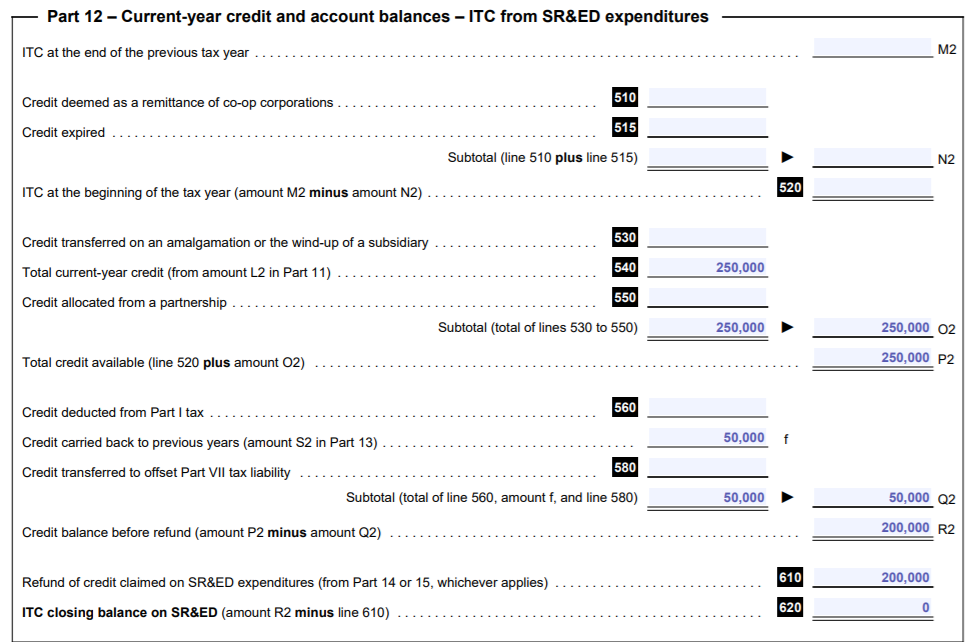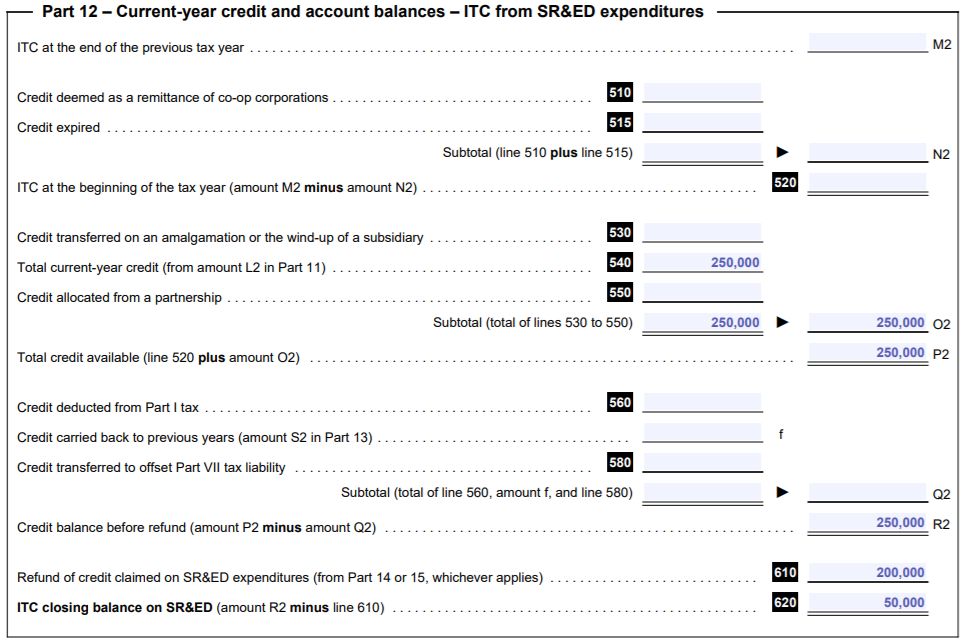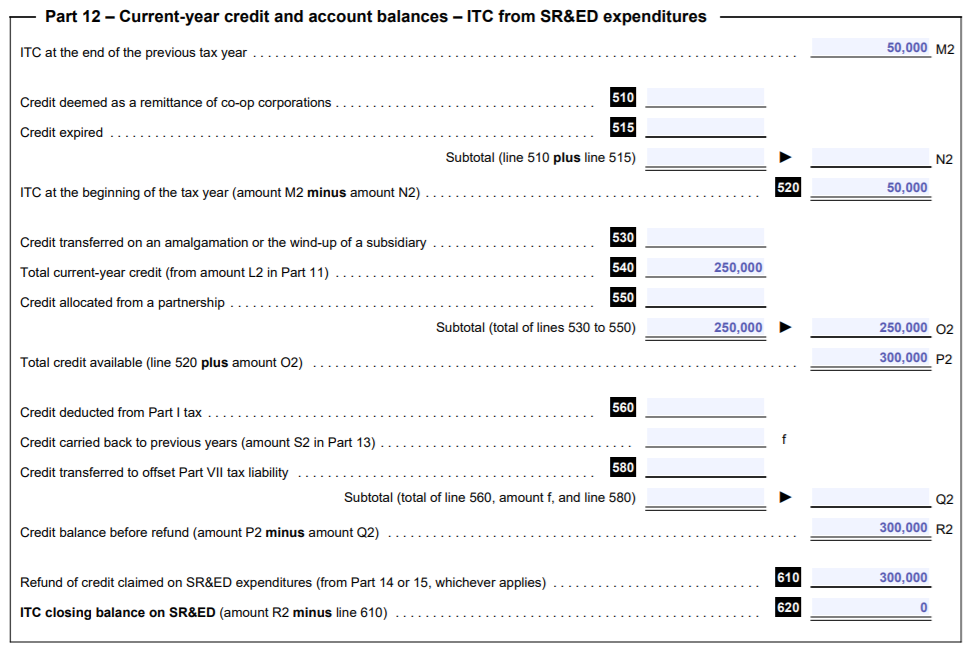SR&ED Carry Back & Carry Forward at the Federal Level

Scientific Research and Experimental Development (SR&ED) investment tax credits (ITCs) may be carried backed to be applied to the prior year’s taxes or carried forward to be applied to future year’s taxes. This post will explain the SR&ED carry back and carry forward rules at the federal level.
SR&ED ITC Carry Back – Federal
According to the SR&ED Investment Tax Credit Policy, a taxpayer can carry back their ITCs available in the current tax year and apply them to any of the 3 preceding tax years.1 The following restrictions apply:
[…] to the extent of the lesser of:
- the ITC available in the current year to the extent that it was not deductible to reduce Part I tax otherwise payable in the current year; and
- the amount by which Part I tax otherwise payable in the previous tax year is more than the ITC available in the previous year.
In other words, the ITC available for carry back is any current year ITC in excess of the ITC needed to reduce Part I tax (if any) in the current year to nil. It is not necessary that the current year ITC is applied to reduce current year Part I tax (if any) to nil. However the ITC amount that could reduce the current year Part I tax to nil (deductible) cannot be carried back.
Further, ITC may only be carried back to reduce to nil Part I taxes otherwise payable in the previous year. As previously stated, ITC that is refunded in the tax year is deemed to be applied to reduce Part I tax otherwise payable in the year. Thus, determining the current year ITC available must take any ITC refunded in the current year into account and determining Part I tax otherwise payable in the previous year must take any ITC refunded in the previous year into account as well.2
Carrying back ITCs can be beneficial if taxes are owed in prior years. It is possible to carry back a portion of ITCs and receive a refund for the remainder of the balance.
The T2SCH31 Investment Tax Credit – Corporations is the form used for carrying back ITCs. In the following example, a corporation’s SR&ED ITCs totalled $250,000 in the tax year for which they are filing and they desire to carry back $50,000 to FY2018.
Part 12 and Part 13 are used to show the carry back.


By carrying back $50,000 the corporation can still cash out the $200,000 left.
SR&ED ITC Carry Forward – Federal
The SR&ED Investment Tax Policy also states that if an ITC is not applied, refunded, or carried back, it may be carried forward to be applied to future tax owed in a subsequent year.3 The time limit on ITCs carried forward varies depending on the year:
Rule 1
An ITC earned in 2005 and earlier tax years generally may be carried forward 10 tax years. Under this rule, ITC expires after 10 tax years (see rule 3).
Rule 2
ITCs earned in 2006 and 2007 tax years may be carried forward 20 tax years. Under this rule, ITCs expire after 20 tax years.
Rule 3
Legislation applicable to 2008 and later tax years allow the following ITCs to be carried forward 20 tax years:
- ITC earned in 2008 and later tax years; and
- ITC earned in the 10 preceding tax years that ended before 2008 (in other words, the ITC earned in tax years after 1997 that did not expire under Rule 1 before 2008).4
Carrying forward ITCs can be beneficial if the refund is not needed right away, if carrying back is not necessary, or if it can not be applied in the current reporting period. This can be especially helpful if a corporation does not have profits or expenses other than SR&ED eligible expenses.
T2SCH31 Part 12 is also used for carry forward. In the following example, a corporation earned $250,000 in SR&ED ITCs but carried forward $50,000.

During the next reporting period, the corporation redeemed the ITCs which had been carried forward. This is illustrated below. The $50,000 from the prior period was added to the $250,000 earned during the current reporting period bringing their total ITCs redeemed to $300,000.

Conclusion
There are times when carrying back or carrying forward SR&ED ITCs makes the most sense and there are times when receiving a refund is the most logical decision. Speak with your tax advisor or SR&ED consultant on what choice is best for your organization. For additional information on organizations that do not have revenue Can Non-Profit Organizations Claim SR&ED Tax Credits? may be of interest.